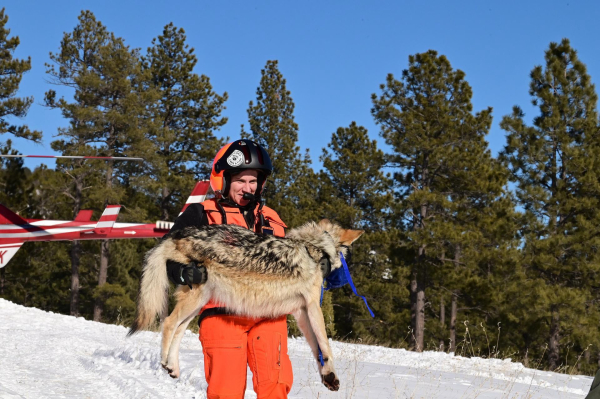Report Shatters Myth of Mexico’s Gun Supply
February 14, 2011
A new report calls “The 90 Percent Myth,” which refers to the number of illegal guns in Mexico coming from the United States, “more political rhetoric than empirical fact.”
We couldn’t agree more. NSSF has been trying to stamp out “The 90 Percent Myth” ever since ATF misstated the number in testimony at a congressional hearing in 2009. A prompt clarification issued by ATF couldn’t put the proverbial genie back in the bottle. Unfortunately, “The 90 Percent Myth” has been widely promoted by Mexican officials and wrongly cited in U.S. news stories, although a Fox News study of the “90% statistic” noted “that number’s just plain wrong.”
In a report issued last week, the independent research group STRATFOR has corroborated what NSSF has been saying for some time about firearms recovered from drug cartels in Mexico: that it is erroneous and grossly misleading to say that 90 percent (a rounded up number) of the firearms recovered in Mexico came from the United States.
The truth is that less than 12 percent of the guns Mexico seized in 2008 have been verified as coming from the United States. The proof can be found in the U.S. government statistics.
According to a June 2009 U.S. Government Accountability Office (GAO) report, “some 30,000 firearms were seized from criminals by Mexican authorities in 2008. Of these 30,000 firearms, information pertaining to 7,200 of them (24 percent) was submitted to the U.S. Bureau of Alcohol, Tobacco, Firearms and Explosives (ATF) for tracing. Of these 7,200 guns, only about 4,000 could be traced by the ATF, and of these 4,000, some 3,480 (87 percent) were shown to have come from the United States.
“This means that the 87 percent figure relates to the number of weapons submitted by the Mexican government to the ATF that could be successfully traced and not from the total number of weapons seized by Mexican authorities or even from the total number of weapons submitted to the ATF for tracing. In fact, the 3,480 guns positively traced to the United States equals less than 12 percent of the total arms seized in Mexico in 2008 . . . .”
Yes, nearly 90 percent of firearms that were recovered and able to be successfully traced by ATF were found to have originated in the United States (that’s 3,480 out of 4,000), but why should that surprise anyone? The United States has a very good system for tracking firearms through serial numbers and purchase records (some countries don’t track them at all). Mexico submitted for tracing only those firearms that it believed, due to their serial numbers, would likely trace positive. The vast majority of guns recovered in Mexico are not sent to the U.S. for tracing at all because their markings, or lack of them, show they do not come from here.
A number of handguns—the top three are 9mm, .38 and .22 caliber—and other sporting firearms have been smuggled across the border, but the STRATFOR report notes that the drug cartels increasingly prefer military weapons instead of sporting arms. Military-grade equipment such as hand grenades, rocket-propelled grenades, automatic rifles and light machine guns are certainly not readily available in this country from firearms retailers. These types of firearms and military ordinance are coming from someplace other than the United States.
The STRATFOR report points out where the guns are flowing from:
•“Most of the military ordnance used by the Mexican cartels comes from other sources, such as the international arms market (increasingly from China via the same networks that furnish precursor chemicals for narcotics manufacturing), or from corrupt elements in the Mexican military or even deserters who take their weapons with them. . .
•Some of these seizures have included M60 machine guns and hundreds of 40 mm grenades obtained from the military arsenals of countries like Guatemala. . .
•Latin America is awash in weapons that were shipped there over the past several decades to supply the various insurgencies and counterinsurgencies in the region. When these military-grade weapons are combined with the rampant corruption in the region, they quickly find their way into the black arms market.”
While Mexican president Calderon is to be applauded for cracking down on the drug cartels and the rampant and systemic corruption in his country, blaming the United States and its Second Amendment freedoms for Mexico’s violent crime will not help solve Mexico’s problem. STRATFOR’s report argues that Mexico’s political leaders have attempted to deflect responsibility for dealing with the cartels: “According to the Mexican government, the cartel wars are not a result of corruption in Mexico or of economic and societal dynamics that leave many Mexicans marginalized and desperate to find a way to make a living. Instead, the cartel wars are due to the insatiable American appetite for narcotics and the endless stream of guns that flows from the United States into Mexico and that results in Mexican violence.”
This argument, of course, implies that U.S. guns laws and the firearms industry, specifically firearm retailers along the border, are to blame, yet it’s those same retailers who cooperate regularly with ATF investigators by providing information that can help bust the illegal firearms traffickers. Also, the idea that there’s a steady flow of newly purchased firearms bound for Mexico doesn’t square with the fact that in 2008 the firearms successfully traced to the United States were, according to ATF, originally sold at retail, after a background check, on average 14 years earlier.
We urge you to read the full STRATFOR report, which ends by dismissing “The 90 Percent Myth”: “It is important to recognize that, while the United States is a significant source of certain classes of weapons and ammunition, it is by no means the source of 90 percent of the weapons used by the Mexican cartels, as is commonly asserted.”







